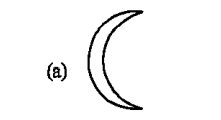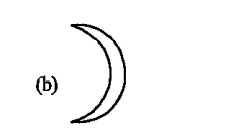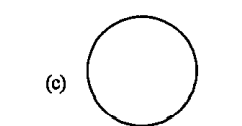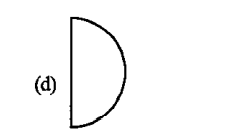What causes the phases of the Moon ?
Step-by-Step Solution:
1. Understanding the Phases of the Moon: The phases of the Moon refer to the different appearances of the Moon as seen from Earth. These appearances change over a cycle of about 29.5 days and include new moon, crescent, first quarter, gibbous, and full moon.
2. Motion of the Earth and Moon: The Earth revolves around the Sun, and the Moon revolves around the Earth. This movement is crucial in understanding the phases of the Moon.
3. Positioning of the Sun, Earth, and Moon: The different phases occur due to the relative positions of the Sun, Earth, and Moon. As the Moon orbits the Earth, the angle at which sunlight hits the Moon changes, which alters how much of the Moon's surface is illuminated and visible from Earth.
4. Illustrating the Positions:
- Position 1: When the Moon is between the Earth and the Sun (new moon), the side of the Moon facing Earth is not illuminated, making it invisible.
- Position 2: As the Moon moves, more of its illuminated side becomes visible (waxing crescent to first quarter).
- Position 3: When the Moon is on the opposite side of the Earth from the Sun (full moon), the entire illuminated side is visible.
5. Reflection of Light: The sunlight reflects off the Moon's surface and travels to Earth. Depending on the Moon's position in its orbit, different portions of the Moon are illuminated and visible from Earth, resulting in the various phases.
6. Conclusion: The continuous revolution of the Moon around the Earth leads to the changing positions relative to the Sun, which in turn causes the different phases of the Moon that we observe from Earth.
---
- Position 1: When the Moon is between the Earth and the Sun (new moon), the side of the Moon facing Earth is not illuminated, making it invisible.
- Position 2: As the Moon moves, more of its illuminated side becomes visible (waxing crescent to first quarter).
- Position 3: When the Moon is on the opposite side of the Earth from the Sun (full moon), the entire illuminated side is visible.
Topper's Solved these Questions
Similar Questions
Knowledge Check
- Question 1 - Select One
Which is the next phase of the moon?
 A
A B
B C
C D
D
- Question 2 - Select One
The distance between the centres of the Moon and the earth is D. The mass of the earth is 81 times the mass of the Moon. At what distance from the centre of the earth, the gravitational force will be zero?
AD2B2D3C4D3D9D10 - Question 3 - Select One
Priyanka observed the phases of the Moon. She saw a full moon in the sky on 19th jan 2009. After 15 days, she new moon. What would be the likely shape of Moon on 18th Feb 2009?
A B
B C
C D
D
Would you see lunar phases of the Moon did not rotate while it orbits Earth?
View SolutionDraw a labelled diagram showing how the different phases of the Moon are formed.
View SolutionWhat is the radius of the moon?
View SolutionWhat is the radius of the moon?
View SolutionThe time interval between identical phases of the Moon is called
View Solution

